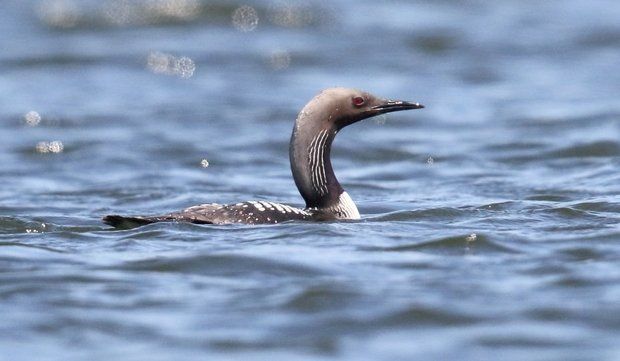
If you're not an obsessed "birder" or someone interested in nature in general, you probably wouldn't know how unusual this is. But a lot of people dropped what they were doing to go see it.
Loons have very distinctive voices. Everyone who's watched TV has almost certainly heard their melancholy background yodeling used symbolically to signify lakes or other remote bodies of water. The voice of the common loon is the one that's usually used, even though in many cases you'd never find a loon of any kind at the location or time of year depicted.
Loons are rarely seen around here except from mid-March through mid-May, during spring migration, or in October and November during fall migration. In the spring when they're heading north to breed, they often call from the sky, which is something I've heard many times through the years.
I vividly remember the first time I heard a loon passing overhead.
It was more than 30 years ago as I was hanging clothes outside to dry on a clothesline. Back then I had just started seriously studying birds and I thought I was hearing things until I looked up and saw a loon. I excitedly told our two boys to look up, which they did, but they were -- to say the least -- underwhelmed.
In the fall, small groups of common loons migrate through this area with the passage of cold fronts. However, there have been exceptions. There's a one-day high-count record of 746 of them passing over a hawk watch in central Pennsylvania on November 12, 1977, and the next day Hawk Mountain recorded 488.
But the Pacific loon found on Lake Nockamixon on July 21 is a species that breeds along the Arctic coast of Alaska and across Canada. It's smaller than a common loon.
Finding one in this area in the middle of July, especially an adult in breeding plumage, is just plain weird.



Reader Comments
to our Newsletter